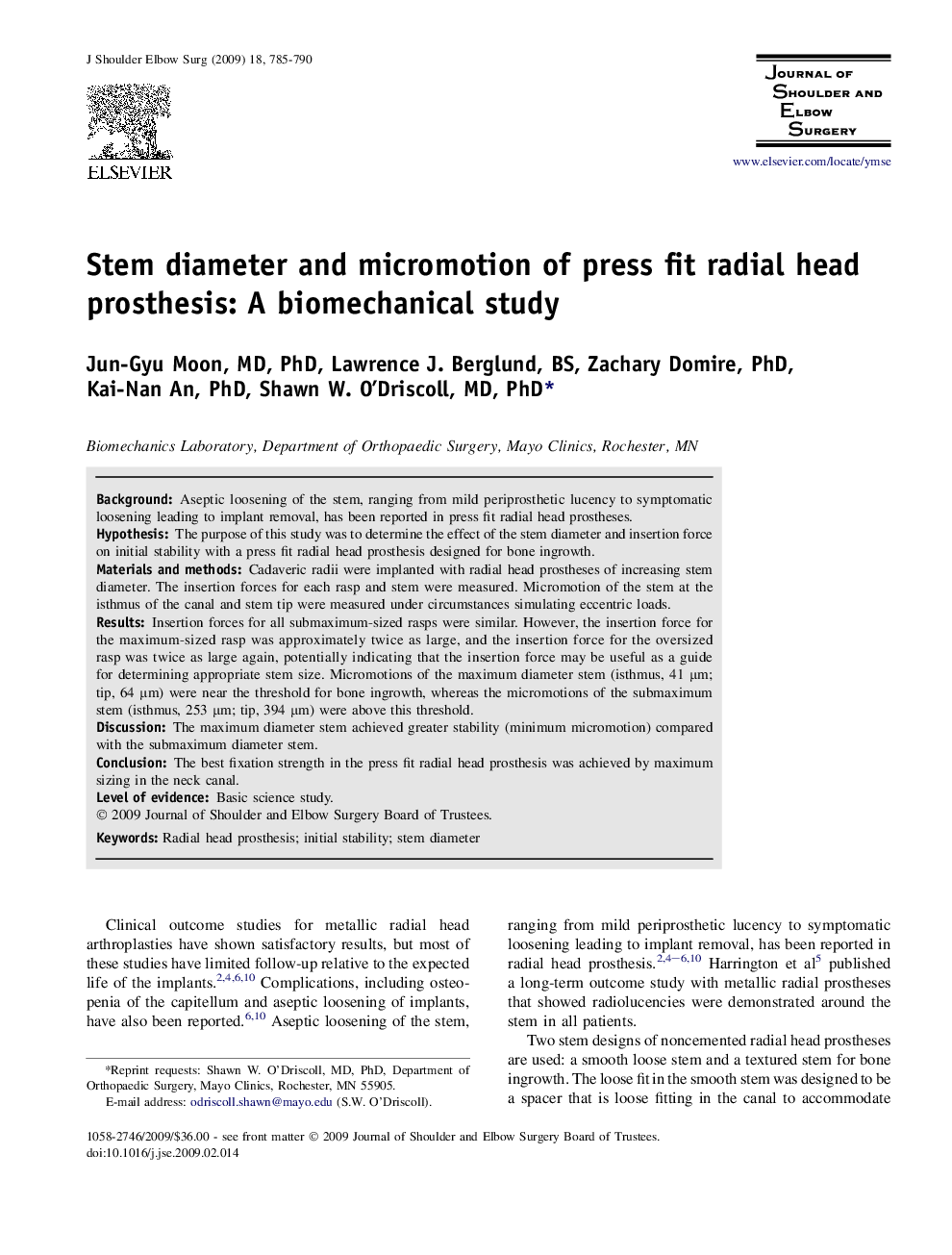| Article ID | Journal | Published Year | Pages | File Type |
|---|---|---|---|---|
| 4075174 | Journal of Shoulder and Elbow Surgery | 2009 | 6 Pages |
BackgroundAseptic loosening of the stem, ranging from mild periprosthetic lucency to symptomatic loosening leading to implant removal, has been reported in press fit radial head prostheses.HypothesisThe purpose of this study was to determine the effect of the stem diameter and insertion force on initial stability with a press fit radial head prosthesis designed for bone ingrowth.Materials and methodsCadaveric radii were implanted with radial head prostheses of increasing stem diameter. The insertion forces for each rasp and stem were measured. Micromotion of the stem at the isthmus of the canal and stem tip were measured under circumstances simulating eccentric loads.ResultsInsertion forces for all submaximum-sized rasps were similar. However, the insertion force for the maximum-sized rasp was approximately twice as large, and the insertion force for the oversized rasp was twice as large again, potentially indicating that the insertion force may be useful as a guide for determining appropriate stem size. Micromotions of the maximum diameter stem (isthmus, 41 μm; tip, 64 μm) were near the threshold for bone ingrowth, whereas the micromotions of the submaximum stem (isthmus, 253 μm; tip, 394 μm) were above this threshold.DiscussionThe maximum diameter stem achieved greater stability (minimum micromotion) compared with the submaximum diameter stem.ConclusionThe best fixation strength in the press fit radial head prosthesis was achieved by maximum sizing in the neck canal.Level of evidenceBasic science study.
